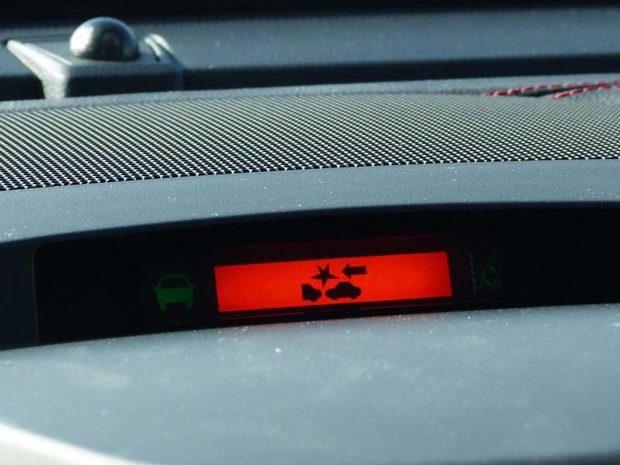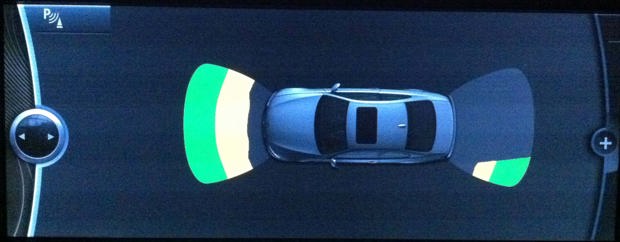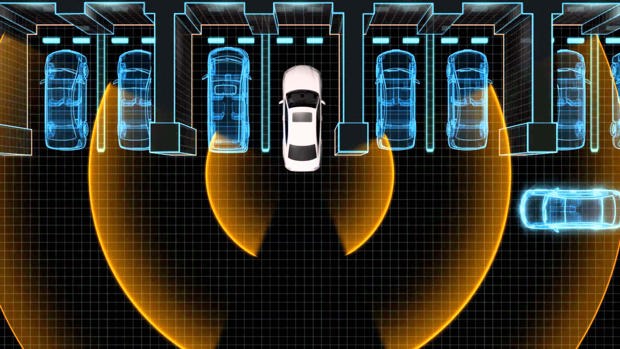Welcome to Stories of the Mechanically Declined! Every month, we highlight a story or situation that reinforces the need for drivers and shoppers to understand their vehicle, how to maintain it, and how it works.
This month’s story comes to us from Lori Boerio, a service advisor at an Ontario dealership. It highlights several important lessons, including the fact that the dealer is the best place to address electronic problems with a newer car, that sometimes, numerous big problems have a small and simple cause, and that repeatedly disconnecting a vehicle battery is not a viable fix for an issue that won’t go away.
The Complaint
Boerio had an irate customer show up with his two-year old sedan, on a tow truck, with numerous frustrating issues.
“This customer was very unhappy,” she says. “His vehicle was exhibiting numerous electronic problems across multiple systems. Many advanced safety systems were non-functional, his cruise control didn’t work, his ABS system was disabled, and he had a number of warning lights and messages in his instrument cluster.” She adds, “Also, his car wouldn’t start, because the vehicle security and immobilizer system had been tripped.”

This customer was even more frustrated because he’d spent a few days driving the car in this state, and trying to fix the problems himself, which created further issues.
“He said he’d disconnected and reconnected his battery numerous times, hoping it would reset the problem. Instead, it caused even more headaches.”
The customer’s two-year old, fully loaded compact came jam-packed with features and options, including high-tech safety systems like radar cruise control, and more. These were all non-functional, after the instrument cluster had “lit up like a [colourful expletive] Christmas tree,” according to the customer.
The symptoms described by the customer, mainly centering around non-functionality of a large but specific group of functions, led Boerio to believe that the problem was sensor-related in nature – and she had a good hunch as to what the problem was.
A diagnostic inspection confirmed it: a single sensor had gone bad, and taken out numerous other systems with it. It was the brake pedal switch or sensor, which determines if and when the driver is applying the vehicle’s brakes. It’s composed of a simple switch connected to the brake pedal lever, and it creates an electrical connection when the pedal is depressed.
“This isn’t uncommon,” Boerio says. “We see bad brake pedal sensors every so often. It’s a cheap part to replace, and that only takes a few minutes.”

The brake pedal sensor is a simple part, but the information it provides to other systems is vitally important. When the brake sensor switch goes bad, possibly because of a failed contact or internal connection, some vehicles react by disabling all systems that rely on data provided by the sensor. In this specific case, numerous safety systems, as well as the radar cruise control, traction control, and ABS were disabled. Each of the several disabled systems came with a corresponding warning light in the cluster, to the frustration of the customer.
“This is completely normal,” Boerio says. “The computer needs to see a brake pedal signal. If it doesn’t, all systems that rely on it are shut down automatically, as they can’t function properly. The warning lights are there to tell the driver that the systems aren’t currently available, and to get their vehicle to a dealer, for diagnosis. It says this, right in the owner’s manual.”
This customer didn’t read his owner’s manual.
Convinced he could fix the problem by unplugging the vehicle’s battery, hoping to effect some “reset” or remedy to the problem, he caused further issues. Possibly because of a loss of power, or improper reconnection of the battery, the vehicle’s security and immobilizer system were eventually activated, meaning the vehicle couldn’t be started. The central touchscreen display was also frozen, and didn’t work.
“Years ago, pulling system power might make a check engine light go out for a period of time, but it doesn’t fix anything. In modern cars, this is a really bad idea.” Boerio comments. “In fact, in many cars, this one included, there’s a fairly specific procedure to follow if you disconnect battery power. Modern electronics can be sensitive in this regard. The owner wasn’t aware of this until I told him, after he admitted to removing battery power about a half-dozen times.”
The Outcome

For so much frustration and so many issues, the majority of the required repairs took just minutes. Boerio’s technician inspected the brake pedal switch, confirming that there was no connection with a simple electronic tester. The gist? The switch appeared fine, but had failed internally.
Solution? A new brake pedal switch was installed and reconnected in about five minutes, and all system functionalities returned to normal, and the warning lights disappeared.
“It’s funny – all of the problems and anger, fixed with a new $35 part, in just a few minutes.”
Boerio also had her technician perform a “hard reset” on the vehicle’s touchscreen interface, which had likely crashed because of the owner’s repeated removal of battery power. Though rare, her technician suspected that the customer may have accidentally removed and re-applied battery power more than once in quick succession – possibly interrupting power to the touchscreen system during a background validation procedure that occurs automatically whenever power is re-introduced.
Finally, the theft system and immobilizer were set back to normal.
“Are modern electronics fussy? Sure – they can be. And old-school customers like this one aren’t often huge fans. But as the electronics get more complex, so do our diagnostic and servicing tools. We can just plug in our scan tool and identify or fix a multitude of problems, in no time at all,” Boerio says.
Lesson Learned

A few lessons are notable here. First off, in a newer vehicle, your least-frustrating course of action in the event of system non-functionality or various warning lights and messages, is to contact your dealer for an appointment. With properly trained staff, diagnostics equipment and tools, they’ll be able to get your ride back up and running in a jiff.
Second, remember that disconnecting and reconnecting your battery is not a viable solution to fix an electronic problem, that this likely won’t reset or remedy anything, and that it could cause even more headaches. In many new vehicles, a specific battery replacement procedure must be followed to prevent issues that could include anti-theft system activation, a head unit crash, a bad idle, and more. Boerio also mentions that she’s seen issues ranging from non-functional power tailgates to intelligent keyfob failure to transmission shifting issues – all caused when battery power is disconnected and reapplied improperly.
The gist? Read your owner’s manual, and if in doubt, your dealer is the best place to diagnose (seemingly) serious problems.

